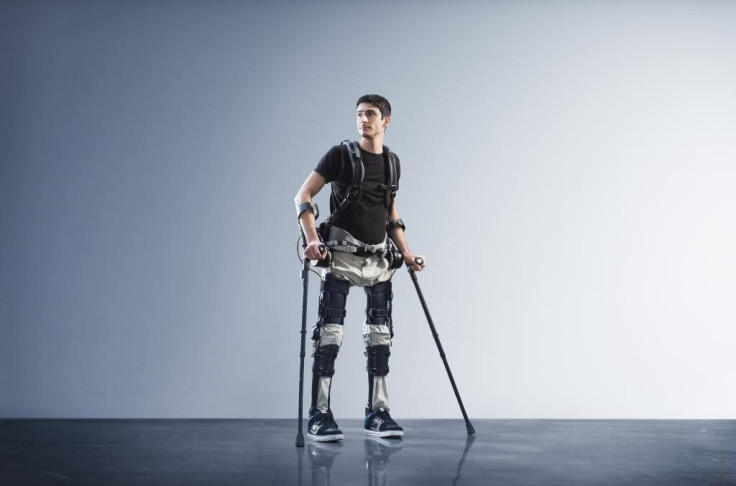The Phoenix: An Affordable, Lightweight Exoskeleton That Will Help Paraplegics Walk Again

Of the more than 250,000 people in the United States living with spinal cord injuries, more than half are considered to be paraplegic, which means they’re paralyzed from the waist down. For these people, using a wheelchair is essential to getting around, and technological advancements have made it easier than ever. Still, nothing compares to the freedom of standing and walking around, which is why Berkeley, California-based startup SuitX has stepped in to create an affordable, lightweight exoskeleton suit capable of helping paraplegics walk again, or for the first time.
Called the Phoenix, the exoskeleton suit works like other exoskeleton suits on the market today, such as the Ekso-Suit, which helped a paralyzed woman walk in 2014. This is because Dr. Homayoon Kazerooni, CEO of SuitX, also founded the company that developed the Ekso-Suit before moving on to found SuitX. The difference between the two is that the Phoenix was designed to be easy to use.
"It’s really not much about the power, it’s about cleverness," SuitX CEO Dr. Homayoon Kazerooni told Fast Company . "We've designed this machine with minimal hardware that just allows for walking and nothing else."
The Phoenix takes the machine-heavy design of many exoskeletons and pares it down to the barest minimum. While most exoskeletons have motors at every joint to increase lifting and moving power, the Phoenix only has two motors at its hip joints to help control movement. This puts the Phoenix at a lean 27 pounds, making it one of the lightest exoskeletons on the market.
The hip motors work with crutches to help the user move forward. To take a step, the user presses a button on whichever crutch corresponds to the side of the body they want to move. This signals the hip to swing forward, while an onboard computer simultaneously loosens the knee joint and clears it off the ground. Right before impact, the knee joint stiffens again to support the step.
The problem with many robot-controlled legs is their susceptibility to falling over or tripping. SuitX attempts to account for this issue by adding technology that stops the leg from continuing its swing forward if it hits something, like a rock or a step, which then allows the user to move in a different direction. It also helps that the maximum speed for the Phoenix on a flat surface is only 1.1 miles per hour.
The suit’s simple mechanical design is paired with a modular design, which means it can be customized to fit anyone, from children to adults. It’s also capable of walking for up to four hours on one battery charge, as well as sitting and standing still. Through the suit’s Android app, users can even adjust their gait.
When it goes on sale next month, the retail price for the Phoenix will be a head-scratching $40,000. And while this is still affordable when compared to other exoskeletons, which cost upwards of $120,000, Kazerooni says he wants to bring the price down even more once production ramps up over the next three years. One 10-year paraplegic who is testing the Phoenix suggests the suit is worth it already, not just because of the added mobility, but also because it’s allowed him to get out of the “bubble” surrounding his chair. Standing up for even a few minutes each day, he said, has benefited his wellbeing immensely.



























